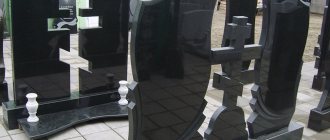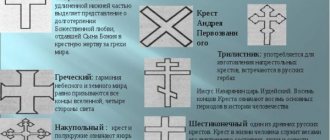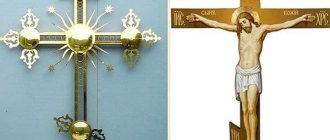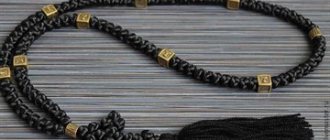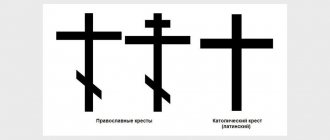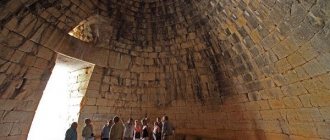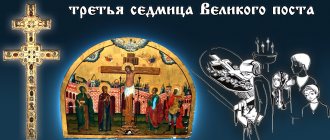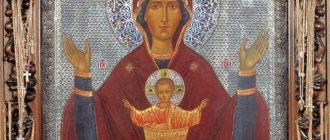History, symbolism and meaning
The Orthodox cross was first found in manuscripts from the 4th century. In those days, the church was not divided into Catholic and Orthodox. Crosses of various types were depicted on church frescoes. And the symbol began to be erected on domes in 1551 on the initiative of Ivan the Terrible. Later he began to be depicted on military and Russian symbols. The cross characterizes the fact of professing Christianity, and the great power that can protect a person from enemy attacks. Even to simply perform prayer, you need to wear it.
The story begins precisely with the crucifixion of Jesus. Previously, the cross was only heard of in the context of capital punishment, when the Romans used such a weapon to crucify criminals.
Moreover, this type of execution was not used before the Old Testament Church; it came from Greco-Roman traditions.
The execution of the cross was considered a pagan tradition, and it began to be used by the Jewish people only several decades before Christmas. The cross in those days was the place of shameful execution, which was chosen by Satan. The people of those years sacredly revered the symbol of faith; it evoked insurmountable fear in them. However, after Jesus was crucified and resurrected, the cross became a desirable attribute that evoked joyful feelings. Since then, the habit of carrying it with you has become commonplace. Crosses were worn by both nobles and common people. The symbol defines the unity of man by the invisible connection between Jesus and all the people of the earth.
Later, a New Testament church consisting of former Jews arose in Palestine. The entry of the cross was difficult because the church prohibited any pagan signs. But over time, there was an increase in the number of Christians from different nations, for whom the cross was a traditional image of faith, so the influence of the Jews gradually subsided.
During the time of Jesus, Christians were persecuted, and believers were forced to conduct their rituals and prayers in secret. Even today, churches still maintain precautionary measures to protect them from opponents of Christianity. The Christian cross means the admiration of people before the sufferings of the Redeemer.
It is believed that the symbol should always be with a person, that it protects him from ill-wishers, from diseases and other troubles.
When Christians took up their cross
Estimated reading time: 4 minutes.
Reader's letter:
It's no secret that, firstly, the cross was a mystical symbol of many peoples long before the advent of Christianity. And secondly, Christians themselves, as far as I know, used this symbol for the first time only in the 4th century. Moreover, this happened “from above”, by decree of the first Christian Roman emperor Constantine. So why is the image of the cross so important to modern Christians? Ivan P., Moscow
***
You are absolutely right in believing that various forms of the cross were used by many peoples of Asia, Africa and China even before the rise of Christianity. Each culture gave its own meaning to this symbol; in its broadest sense, it was usually associated with the Cosmos, the symbolic meaning of numbers or the opposition of heaven and earth or space and time. At the same time, only in Christianity does the cross acquire a fundamentally new, unusual meaning, being a symbol of Jesus Christ, evidence of His atonement for human sins and a guarantee of the salvation of people.
The cross began to be used throughout the Roman Empire only towards the end of the 4th century. Indeed, the widespread and open use of the cross is traditionally associated with the name of Emperor Constantine the Great, who had a vision of a fiery cross in the sky with the inscription “By this victory!” Until the era of Constantine, Christians refrained from depicting the cross of Christ in its actual form, and even more so from depicting it together with the Crucifixion, which, however, does not mean at all that the symbol did not exist.
Gemma from Constanta. Comes from the Romanian city of Constanta, where it was found along with several dozen other ancient gems of the 1st-3rd centuries. The dating on the British Museum website is III-IV centuries, although there are arguments in favor of an earlier date - II-III centuries. Location - British Museum.
The cross as an instrument of the salvation of the world by Jesus Christ has been the subject of greatest celebration among Christians from the very beginning of the Church. The Fathers of the Church called this honoring the apostolic tradition. In the first three centuries it belonged to the area of disciplinae arcanae, that is, to the circle of those Christian beliefs and rituals that were kept secret from the pagans. The pagans, however, knew about it, because certain Christians had the courage to openly confess the cross.
According to the story of Pontius, the biographer of St. Cyprian of Carthage, in the 3rd century some Christians depicted the figure of a cross even on their foreheads; by this sign they were recognized during persecutions and handed over to torture. From the middle of the 3rd century, one image (on a vessel) of a human face with a cross on the forehead has been preserved. From the acts of the VII Ecumenical Council it is known that during the reign of Diocletian (III) the martyrs Procopius and Orestes wore an image of a cross on their chests.
Pagans mockingly called Christians cross-worshipers (crucicolae), suggesting that Christians revere the cross as a fetish or as an idol. On objects preserved from the first three centuries and found during excavations in Rome and Pompeii, for the most part only allegorical images of the cross and Crucifixion are found. There are also many symbols of the cross: an anchor, as well as the figure of Christ, which was previously mistaken for the image of a cross and was called crux decussata. Tertulian, Origen and others testify to the worship of the cross according to ancient custom at the beginning of the 3rd century.
The whole life of a Christian should be a sign of the cross, according to the words of the Apostle Paul: “But I do not desire to boast except in the cross of our Lord Jesus Christ, by which the world has been crucified to me, and I to the world” (Gal. 6:14). This and other statements of the apostles - people who saw Christ - leave no doubt that the cross and the sign of the cross from the very beginning of the Christian Church were not just used as one of the symbols, but served as the central concept of the Christian faith, expressing its essence.
A caricature of the first Christians made by one of the pagan Roman soldiers (found on the Palatine Hill). The drawing clearly confirms the use of the symbol of the cross in early Christianity.
* * * Let us not be ashamed to confess the Crucified One, let us boldly depict with our hands the “sign of the cross” on our foreheads and on everything: on the bread that we eat; on the cups from which we drink, and depict him when going out; when we go to bed and get up, when we are on the road and rest. He is a great protection given to the poor as a gift and to the weak without difficulty.
Saint Cyril of Jerusalem, 4th century
* * *
If you feel that your heart is irritated, protect your chest with the sign of the cross.
Saint John Chrysostom, IV century
* * *
Get away, devil, or I will overthrow you with the cross, before which everything trembles. I carry the cross in my limbs, the cross in my procession; cross in my heart; the cross is my glory.
Saint Gregory the Theologian, 4th century
***
Among the sand dunes in Flanders stands a large wooden cross with the image of the Savior in the center. On the cross itself, the following words, blackened but not disappeared with time, are clearly hollowed out:
I am the Light, and you do not see Me. I am the Way, and you do not follow Me. I am the Truth, and you do not believe Me. I am Life, and you are not looking for Me. I am the Teacher, and you do not listen to Me. I am the Lord, and you do not obey me. I am your God, and you do not pray to Me. I am your best Friend, and you do not love Me. If you are unhappy, then don't blame Me.
Varieties by shape
The real Russian cross is eight-pointed. It can be either rounded or with sharp corners. Seven-pointed, six-pointed and four-pointed options are also used. At the same time, the eight-pointed one is called the Orthodox cross, the six-pointed one is called the Russian Orthodox cross. These are the names used in other countries, for example, in the USA.
Straight-line
You can find out what the straightforward version looks like by asking for a standard Orthodox cross in church. Its beams intersect at right angles. It is this type that is most common, since it completely repeats the outline of the cross on which Jesus was executed.
With extended beams
Expanded beams are difficult to find today, but this form also exists. These are mainly ancient Byzantine pre-Mongol products. The idea of the symbol is that the beams are rays emanating from the center - the Light of life, which was promised by Christ.
With a square or diamond in the middle
Diamond crosses are a more loyal option. This is how jewelry is made. In the church, this is a four-pointed product, with a rhombus in the middle, where two letters XB are indicated or the inscription “Save and Preserve” is made.
With curved ends of beams
This option is the most beautiful. It is made in the form of lily petals, which can be decorated with cubic zirconia. “Krin” is translated as “lily”, which explains the name of the product.
With triangular ends
Symbols with triangular ends are especially revered by believers because they symbolize the Holy Trinity: Father, Son and Holy Spirit. However, they are not widespread enough.
With circles at the ends of the beams
The circles mean drops of the Savior's blood. Usually decorated in the form of beads or dewdrops. Often they can be combined into three drops, as a special veneration of the triple essence of God.
With flourishing decoration
The shape symbolizes the Tree of Life and is framed with floral patterns, which may contain lilies, vines and other plants.
Kinds
In addition to form, symbols of faith also differ in appearance. Types arose in different historical eras, timed to coincide with various significant events.
Georgievsky
A reward option designed to support the faith of church ministers and officers. It has 4 ends, and its shape is recognized as true as possible. At one time, this award was approved by Catherine the Great.
Vine
The eight-pointed cross depicts a grapevine, and in the center is often a portrait of the Savior or the letters XV. The idea of the cross is that Jesus is the vine and all people are branches. The main sacrament that is associated with this idea is the Sacrament of Communion.
Seven-pointed
There are also seven-pointed crosses. Today they are not produced as body wear, but icons of the 15th century, as well as the domes of the oldest churches, are decorated with this type.
crown of thorns
On icons of the 12th century you can find images of a thorny crown on crosses. This is how the authors tried to depict the suffering of Christ.
gallows
A modern version of temple decoration. Widely used when decorating church service items, church vestments, as well as on many icons that decorate the walls of churches.
Maltese
The appearance of the Maltese Cross “came” from the island of Malta, where there was a long battle against Freemasonry. The shape of the symbol is equilateral, with rays expanding at the ends. It cannot be purchased - it is awarded only for special valor in battle. In particular, at one time he was approved by the Order of John of Jerusalem. The cross adorned the coats of arms of many cities and regions.
Prosphoric
The prosphora is a unique seal depicting the Greek phrase “Jesus the Conqueror.” The shape of the prosphora cross is similar to the St. George type, but has an additional inscription. Initially it existed in a limited number of churches, and today its image is printed on prosphora.
IC.XP.NIKA – Jesus Christ the Winner. Printed on prosphora and means that the Redeemer redeemed sinners from sinful captivity.
Teardrop-shaped four-pointed
It is this rounded cross that is located in the Greek version of the Gospel, published in the 2nd century. The drops at the ends of the product symbolize the blood of Jesus, as well as the fight for one’s faith to the end.
Eight-pointed
The most popular, revered type of cross. It symbolizes the moment of Christ's crucifixion. Those who went to execution carried their crosses on themselves. In shape these were four-terminal structures. Then, after the execution of Jesus on the cross, they made a footstool to secure the legs of the son of God. Pontius Pilate ordered to place a tablet on the top bar.
During the time of Elizabeth Petrovna, the eight-pointed shape was enshrined in law, and crosses were used as awards. This form is considered the closest to faith, since on the top bar there was the inscription “Jesus - King of the Jews.” It was from that hour of death that Christ received recognition.
Equilateral
This is a type of product with two perpendicular beams. Invented for variety, does not carry any special idea. The shape resembles a square.
Those who deny the shrine
But some Christian churches and sects do not recognize the image of the cross. Like the first Christians, they also consider it an instrument of torture and martyrdom. The Bulgarian Bogomils and the medieval Cathars (Albigensians) did not accept this symbol, who refused to wear such an unholy image around their necks. One of the reasons for the church accusations of heresy against these good Christians was precisely their refusal to venerate the cross. Mormons, Jehovah's Witnesses and Molokans also do not recognize the cross. Jehovah's Witnesses have special claims to the sacred Christian symbol: not only do such veneration for them amount to idolatry, they do not believe at all that Jesus was crucified on the cross. In their opinion, during the Roman Empire, criminals were still executed on stakes. Satanists use an inverted cross and an inverted figurine of Jesus in their rituals, but instead of veneration they show disrespect - they spit on the cross, trample it with their feet, shout blasphemy and commit other actions disgusting for believers. However, for the inhabitants of Europe and America, the era of universal Christianization was not in vain. The cross is still the most common decoration today, and it is worn by fashionistas and fashionistas who do not think for a minute about the sacred meaning of this symbol.
Which cross is considered a body cross in Orthodoxy?
A cross is considered a cross that cannot be removed. The believer should not part with the product even while bathing. Wearing a cross is a symbol of atonement before the Lord. There are no requirements for choosing a creed, but there are a number of tips:
- The Lord is more inclined towards wooden and metal products, but the materials are not suitable for all people. Gold and silver are considered the most durable and safe. The Church does not see anything reprehensible in decorating a product.
- It doesn’t matter whether the cross is worn on a cord or a chain. The main thing is the convenience of the believer, as well as safety. Silver chains are more suitable for children.
- There is no need to choose huge products; they often get lost and are uncomfortable to wear.
Captions and images don't matter. The Church allows for various options. If a product is sold in a church shop, it means it has been consecrated.
So what does the cross of St. Peter mean?
The simplicity of drawing both types of cross itself suggests that the symbol appeared among different peoples, isolated from each other. They developed their ideas and in the end we get the same symbol with different meanings. This has always been the case – some perceived the sign positively, others – negatively. No one specifically wanted to invert the “ordinary” or, as it is called, “Latin” cross. It was originally like this among many nations.
Based on the above , we can conclude that we give all the meanings of symbolism ourselves. And it doesn’t matter what symbol you use or what faith you profess. It is much more important to remain a peace-loving person, not to harm others, to be provoked, and so on. It is not symbols that define a person, but his actions in relation to the world around him.
Answers to popular questions
Despite the antiquity of the tradition, questions about wearing a symbol of faith arise even among believers.
The need for consecration in the temple
As noted, the power of the cross is determined by a person’s faith. But still, it is better to consecrate the product.
What to do in case of loss
If lost, you must purchase a new cross. Christians attach a negative meaning to such an incident. But prayer and purchasing a new product will help correct the situation.
What to do with a found cross
It’s better not to pick up the find. But if you still find it in your hands, then you need to take it to the temple. There it will be consecrated and given to those in need.
Is it possible to give
You can give the product as a gift, but only to family and friends with a sincere desire to help. Believers say that by giving a cross, you also give a part of your well-being.
How to consecrate
Only the priest in the church can consecrate the product. If this is not possible, then the Lord’s Prayer is read over the cross and then worn around the neck.
Two crosses
The Church does not prohibit having two creeds. But usually an icon is chosen as the second one. One product can be placed above the head of the bed, or near icons, and the second can be worn as a body item. .
How does the Orthodox cross differ from the Catholic one?
The difference between the crosses is as follows:
- Catholics venerate a four-pointed cross with a longer vertical beam. The Orthodox version can be of any shape, but the eight-pointed version is most often venerated.
- Among the Orthodox, Jesus is depicted as resurrected; almost every product has such an image. Catholics depict the Savior as dead, in streams of blood.
- On Catholic products, Christ’s feet are nailed with one nail, and on Orthodox ones - with two.
- The letters for Catholics are depicted in Latin INRI, and for Christians in ancient Greek - IHHI.
The cross has a strong ecclesiastical meaning. Its influence on the life of Christians is great - according to the canons of the church, believers must wear the symbol of faith on their bodies.
A wide variety of types and shapes allows you to choose the appropriate option and wear it with true faith in your soul.
Crucifixion in Christianity
The shape of the crucifixion is still the subject of theological and philosophical debate.
The traditional cross, consisting of two perpendicular beams, is called the Latin cross and is used in the Catholic branch of Christianity along with a sculpture of the crucified Christ on it. In the Orthodox tradition, in addition to the crossbar for the hands, there is also a lower oblique crossbar, where the feet of Christ were nailed, and an upper one in the form of a tablet on which is written ІНЦІ ("Jesus of Nazareth, King of the Jews"). The slanting crossbar symbolizes the two thieves who died with Jesus: the end that looks up is the one who repented and ascended to heaven, the one lowered down is the one who persisted in sin and ended up in hell.
In addition, there is a version that execution by crucifixion was carried out not on a cross at all, but on an ordinary pillar. As a result, many religious movements generally deny the existence of the cross or deny the worship of it as a relic: Cathars, Mormons, Jehovah's Witnesses.
The symbol of the cross from the religious tradition has firmly entered everyday life with many established expressions. For example, “to bear your cross” means “to endure difficulties,” and to say that a person does not have a cross means to call him unscrupulous.
